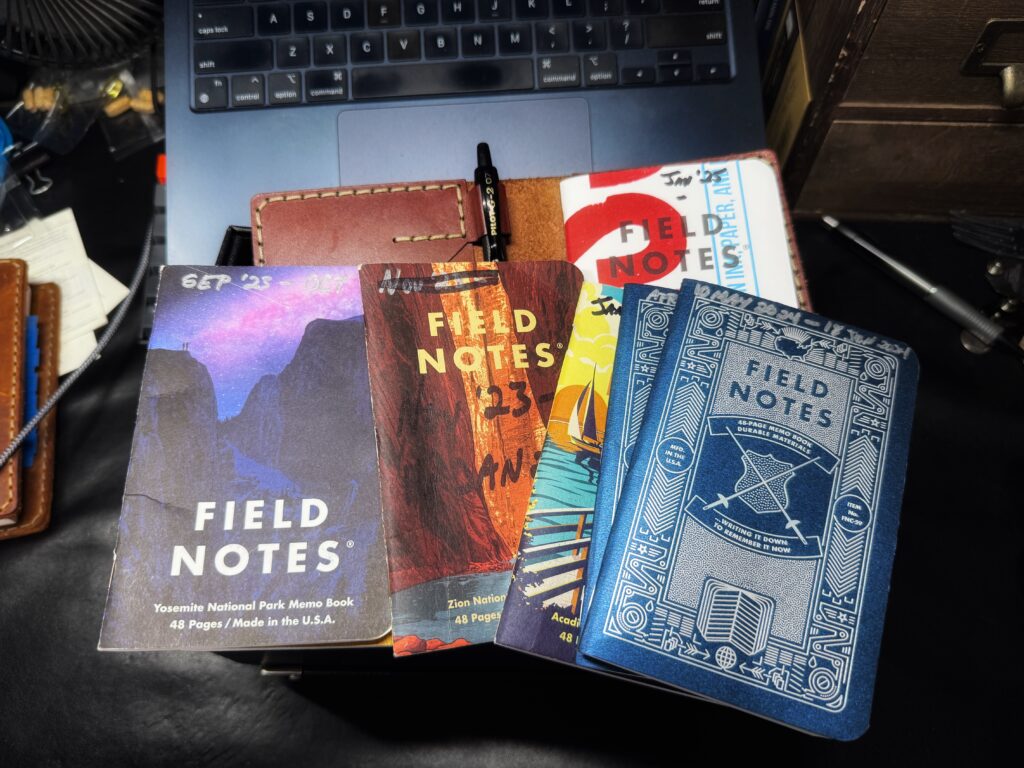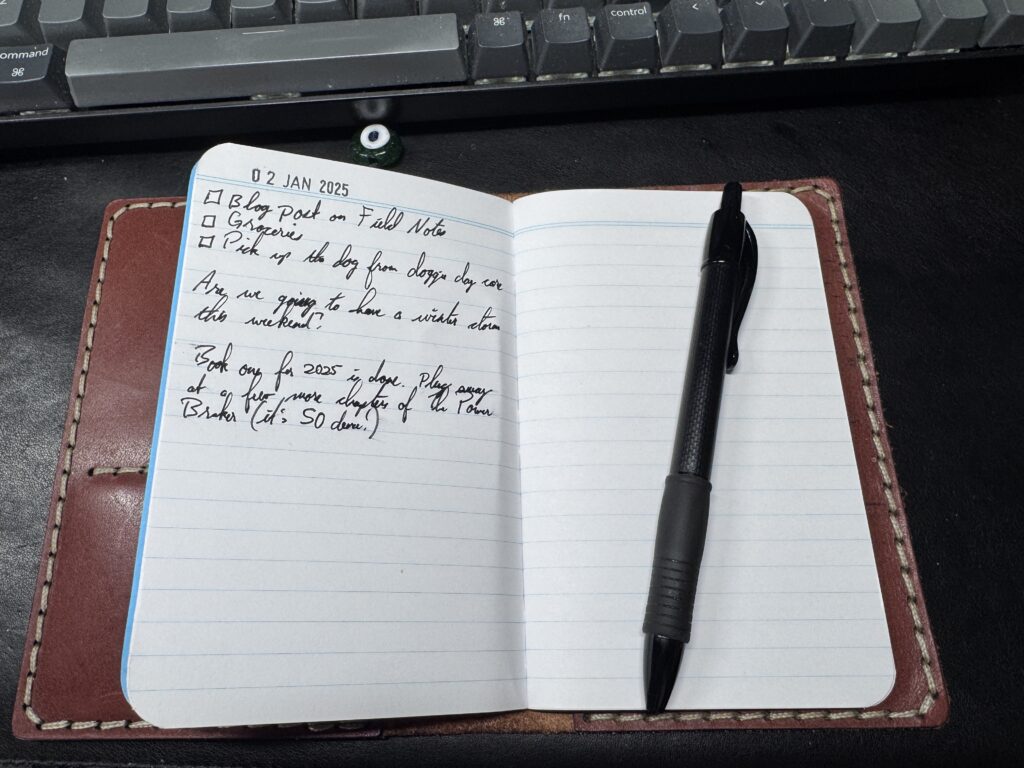
In a world overflowing with apps, devices, and digital productivity solutions, you might think my favorite daily planning tool would be something high-tech. But no—the greatest daily planning tool I’ve ever used is a humble, analog Field Notes notebook.
Let me tell you why this pocket-sized powerhouse has revolutionized the way I plan, track, and remember everything in my day-to-day life.
Totally Analog, Totally Reliable
There’s something refreshingly simple about pen and paper. A Field Notes notebook never needs charging, doesn’t require a Wi-Fi connection, and won’t distract you with notifications. It’s always ready when you are. Whether I’m jotting down tasks for the day, sketching out ideas, or making quick notes in a meeting, my Field Notes notebook is there for me—no loading screens, no software updates, just pure functionality.
Bullet-Journal Style Tracking
I use a bullet-journal style system to keep my Field Notes organized. Each day, I jot down tasks, reminders, and notes in a simple, flexible layout that I can adapt.
- Tasks: I use simple symbols to mark tasks (□ for tasks, ✓ for completed, → for moved to another day).
- Notes: Meeting highlights, quick ideas, or things I must remember get logged right next to my tasks.
- Reminders: A quick star (★) next to an item ensures I’ll remember to follow up.
This system doesn’t lock me into predefined templates or digital workflows. If something isn’t working, I can change how I do things—no need to navigate settings or search for a new app.
Also, the minimalist nature keeps me focused on the important stuff. Yes, I doodle, sticker, stamp, washi tape, and do all the other journal-related things in my daily journal or reading journal, but my Field Notes are my daily driver, focused on the tasks at hand.

Every day, a new page gets a date stamp (because date stamps are awesome), and the list begins. Sometimes, the list is quite long, sometimes it’s short. Yes, sometimes one day has more than one page. Whatever the day requires, that’s what it gets.
Completely Customizable
The beauty of Field Notes is that it’s as versatile as your imagination. Want to track habits? Create a grid. Need a place for brainstorming? Dedicate a few pages to freeform doodles. Whatever your system, these notebooks adapt to you, not the other way around.
Beautiful and Durable
Field Notes notebooks are beautifully designed. Their covers come in various styles, from classic kraft brown to limited-edition themes that feel like collector’s items (I LOVE the National Parks editions). Inside, the paper quality is great and perfect for my handy Pilot G2 pen.
I use a leather cover from Galen Leather, adding an extra layer of durability and style. However, you don’t have to use a cover. These notebooks hold up well independently, even with regular, rough use. Whether you go with a cover or not, Field Notes notebooks are built to last.
Why Analog Works for Me
Writing things down by hand requires a certain mindfulness. It forces you to slow down and think, which helps me prioritize and remember better than I could with an app. Research also shows that writing on paper helps us learn and remember more effectively than using a computer because we’re making more sensory connections.
Plus, flipping through past notebooks is like opening a time capsule of my life. My old Field Notes are filled with memories, ideas, and lessons that would’ve been lost in a digital archive.
Also, writing in a notebook has other advantages, regardless of the format. Jared Henderson talks about his philosophy, most of which I share (no, I don’t hate computers), and why he loves writing things down by hand:
A System That Works for You
Creating a system that works for you is the key to making a Field Notes notebook work. It’s not about adhering to someone else’s rules or layouts—it’s about making it your own. If you’re new to analog planning, start simple: a daily to-do list and a few notes. Over time, you’ll naturally develop a system that fits your needs.
Ideas for Using Field Notes
Here are a few other folks using Field Notes regularly to inspire you. First, Steven Foster shares some of his daily ideas:
Up next, Peter McKinnon used his Field Notes for 800 days and changed his life:
And here’s Sigogglin Jack’s “micro-bujo” implementation of his Field Notes, switching from a Moleskine journal for his everyday carry:
Final Thoughts
If you’re looking for a reliable, customizable, and beautifully simple way to organize your life, I can’t recommend Field Notes notebooks enough. Whether you’re a seasoned bullet journaler or just dipping your toes into analog planning, these little notebooks can help you stay on top of your game in a way that feels personal and satisfying.
So, ditch the endless search for the perfect app and try Field Notes. You might find that the best planning tool isn’t on your screen—it’s in your hand.
The Eclectic Educator is a free resource for everyone passionate about education and creativity. If you enjoy the content and want to support the newsletter, consider becoming a paid subscriber. Your support helps keep the insights and inspiration coming!